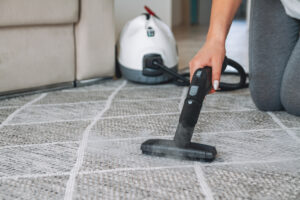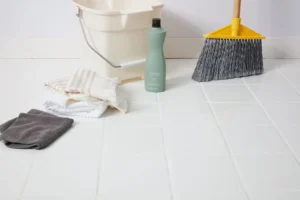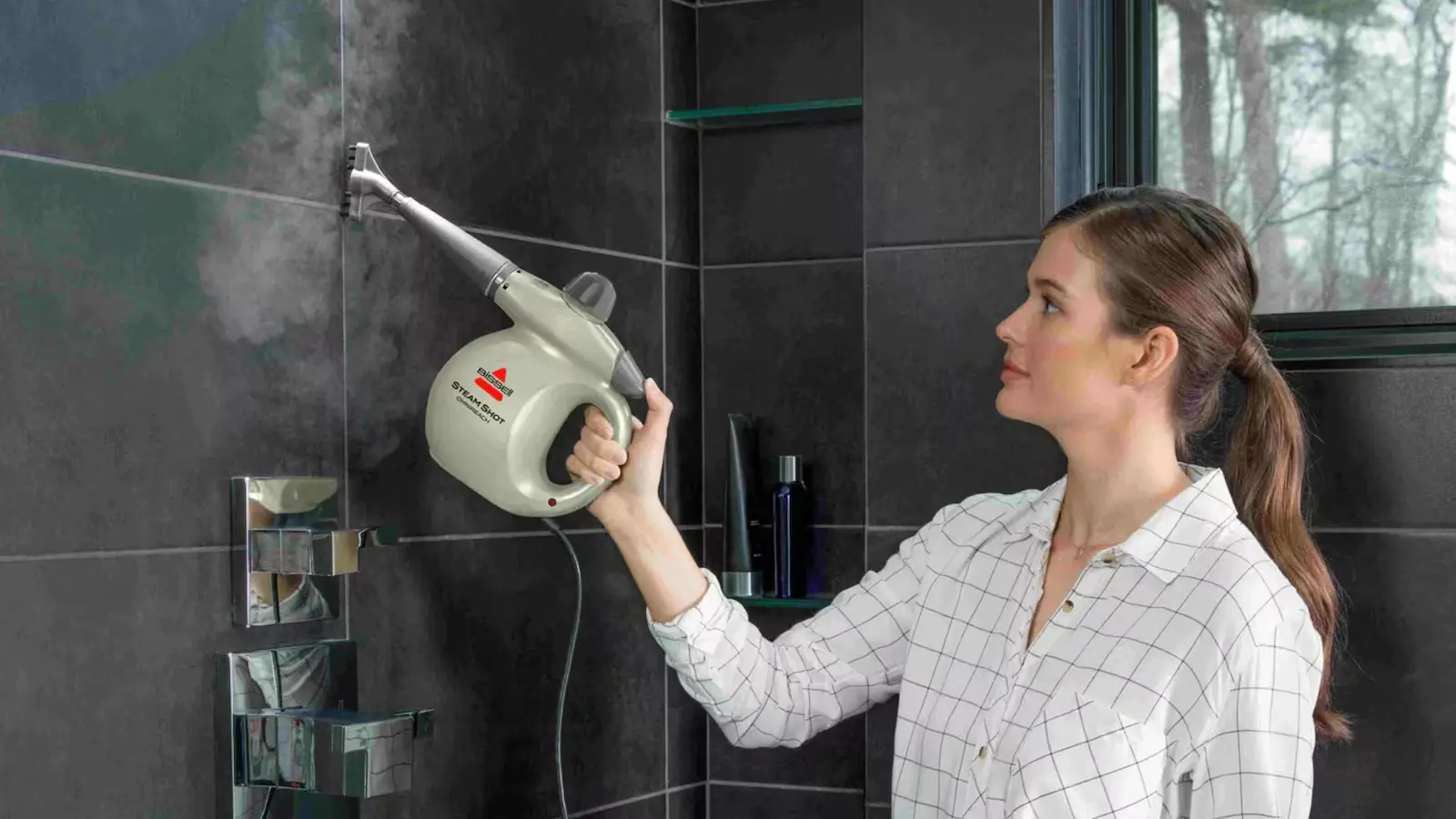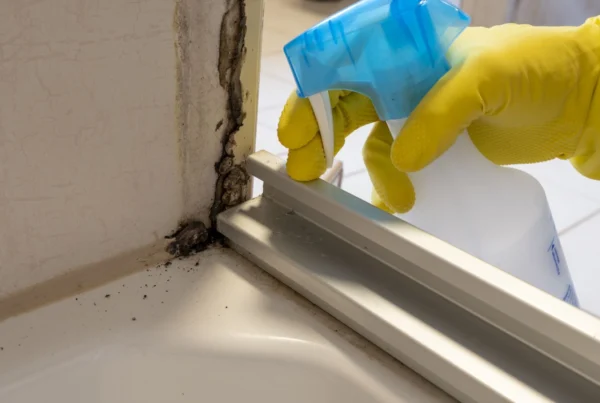Steam Cleaning Your Bathroom: Step-by-Step Guide for Beginners
If you’re tired of scrubbing grout, battling soap scum, and constantly fighting bathroom odors, you’re not alone. Bathrooms are one of the hardest rooms in any home to keep spotless, and harsh chemical cleaners often leave behind strong fumes or residues that aren’t ideal for your family’s health. That’s why more homeowners are switching to steam cleaning, a natural, powerful, and eco-friendly way to deep clean and sanitize surfaces without any chemicals.
So, how do you use a steam cleaner in the bathroom? It’s simpler than you think. A steam cleaner works by heating water to a high temperature, turning it into pressurized vapor that loosens dirt, kills bacteria, and melts away grime on contact. The result is a deeply sanitized, sparkling bathroom that looks and smells fresh without the backbreaking scrubbing or harmful sprays.
In this guide, we’ll walk you through how to use a steam cleaner in the bathroom, step-by-step, along with expert tips on what surfaces it’s best for, safety precautions, and how often to use it to keep your bathroom gleaming year-round.
Why Use a Steam Cleaner in the Bathroom

Steam cleaning offers more than just convenience; it provides a deeper, healthier clean. Traditional cleaning methods often rely on chemical disinfectants, which can leave residues that irritate sensitive skin or respiratory systems. Steam cleaners, on the other hand, use nothing but water to generate heat and pressure, which can kill up to 99.9% of bacteria and germs naturally.
The steam penetrates pores and grout lines, lifting stubborn dirt and grime that typical scrubbing can’t reach. It’s especially effective against soap scum, limescale, mildew, and water stains, the main culprits behind a dull, grimy bathroom. Because the steam’s heat breaks down buildup on contact, there’s no need to spend hours scouring tiles or shower doors.
Another key benefit is that steam cleaning deodorizes without chemicals. It removes odors at their source, leaving behind a neutral, fresh scent instead of a perfumed cover-up. It’s also eco-friendly, requiring no single-use wipes or sprays, and it’s completely safe for kids and pets.
How to Use a Steam Cleaner in the Bathroom (Step-by-Step)
Steam cleaning your bathroom doesn’t have to be complicated. With the right steps, you can transform even the toughest areas from the shower to the toilet into sparkling, germ-free spaces.
Step 1: Prepare the Bathroom
Before you start steaming, a bit of preparation ensures you’ll get the best results. Begin by removing any clutter from your bathroom towels, toiletries, mats, and decorations should be moved away from cleaning zones. Sweep or vacuum to pick up dust, hair, and debris so that these don’t get blown around during steaming.
Next, wipe away any surface dirt or residue that’s easy to remove. While steam cleaners can tackle most grime, they work best on surfaces that aren’t covered in loose dust or hair. Plug in your steam cleaner, fill it with water as directed, and give it a few minutes to heat up. Most units take between 5 to 10 minutes to reach optimal temperature.
Lastly, attach the right cleaning tool or brush for the job, larger brushes for tiles, smaller ones for grout, and a squeegee for glass or mirrors.
Step 2: Steam Clean the Shower and Bathtub
The shower and tub are often the most time-consuming parts of bathroom cleaning because of soap residue, hard water stains, and body oils. Steam cleaning makes this process much easier.
Hold the steam cleaner’s nozzle a few inches from the surface and move it slowly across the area. The heat will soften grime and lift soap scum without needing abrasive scrubbing. For glass doors, use a squeegee attachment to ensure a streak-free finish. For acrylic or fiberglass tubs, keep the nozzle moving to avoid prolonged heat on one spot.
After steaming, wipe surfaces immediately with a clean microfiber cloth to remove loosened dirt and excess moisture. You’ll instantly notice a smooth, residue-free finish.
Step 3: Deep Clean the Tiles and Grout
If there’s one place steam cleaning truly shines, it’s on grout lines. These narrow gaps trap moisture, dirt, and mildew, making them difficult to clean by hand. The high temperature of the team penetrates deep into the grout and kills bacteria living inside.
Use a small, stiff-bristled attachment or grout brush on your steam cleaner. Run the nozzle slowly along the grout lines, letting the steam work for several seconds on each area before wiping it down. For heavily stained grout, you can go over it twice or finish with a gentle scrub using a toothbrush dipped in baking soda.
The transformation is usually immediate; dull, darkened grout becomes bright again without harsh chemicals or bleaching.
Step 4: Sanitize the Toilet
Steam cleaning is one of the most hygienic ways to clean your toilet because it can sanitize areas that are hard to reach. Attach a narrow nozzle or angled brush and carefully steam the outer bowl, hinges, seat, and even under the rim. The steam’s pressure helps dislodge hidden grime and kills odor-causing bacteria.
After steaming, wipe all surfaces dry with a cloth. You can also follow up with a quick polish using a disinfecting wipe or spray for a pleasant finish.
Step 5: Clean the Sink and Faucet Area
Sinks often accumulate toothpaste residue, water spots, and soap scum, all of which are easily removed with steam. Use a medium-sized attachment to move across the basin and faucet handles, then target tricky areas like drain rims or faucet joints using a smaller nozzle.
Steam is especially helpful for removing limescale buildup on metal fixtures. Once you’ve steamed these areas, wipe immediately with a soft microfiber towel to restore shine.
Step 6: Refresh Mirrors and Glass Surfaces
You might think steam would fog up your mirrors, but when done properly, it actually leaves a streak-free finish. Use the steam cleaner’s glass or window attachment and move it evenly across the mirror. The heat loosens dirt, while the wiper edge removes excess moisture. Follow up with a dry cloth for a spotless, glossy result.
Step 7: Finish with the Floor
Your bathroom floor should always be the last step since debris from other surfaces may have fallen during cleaning. Attach the mop head to your steam cleaner and move in long, smooth motions across the floor. Focus on corners and grout lines, where bacteria and soap buildup tend to hide.
Steam mopping not only sanitizes but also helps remove stuck-on residues without additional chemicals. Allow the floor to dry completely before walking on it to prevent slipping.
What Not to Steam Clean
While steam cleaners are versatile, not every bathroom surface is steam-safe. Avoid using steam on:
- Unsealed grout or natural stone, as the heat may damage the sealant or cause cracking.
- Painted walls, which can bubble or peel under heat.
- Plastic or adhesive parts, which may warp.
- Electrical fixtures or outlets, for safety reasons.
Always test steam on a small, inconspicuous area first to ensure compatibility.
How Often Should You Steam Clean Your Bathroom?
For most households, steam cleaning the bathroom every two to four weeks keeps mold, limescale, and soap scum under control. However, high-use bathrooms like those in large families may benefit from weekly steaming, especially in humid environments where mold grows faster.
Between deep cleanings, you can perform light maintenance by wiping surfaces after each shower and running the ventilation fan to keep moisture levels low.
Benefits of Steam Cleaning the Bathroom
 Steam cleaning provides a deeper level of cleanliness compared to traditional methods. It doesn’t just make your bathroom look clean; it sanitizes every surface by killing harmful microbes that may linger even after wiping.
Steam cleaning provides a deeper level of cleanliness compared to traditional methods. It doesn’t just make your bathroom look clean; it sanitizes every surface by killing harmful microbes that may linger even after wiping.
It’s also eco-friendly, using only water instead of chemical cleaners that can irritate skin or harm the environment. The lack of residue means surfaces stay clean longer because there’s no sticky film to attract dust or dirt.
Additionally, steam cleaning can save time and effort. The high pressure does most of the work, so you don’t have to spend hours scrubbing stubborn spots. You’ll notice surfaces not only look cleaner but feel smoother too, a telltale sign of truly sanitized results.
Safety Tips for Steam Cleaning
Even though steam cleaning is straightforward, it involves high heat, so safety is key. Always wear gloves to protect your hands and avoid pointing the nozzle toward your body. Keep children and pets out of the bathroom while cleaning.
Avoid overfilling the water tank and never use cleaning agents inside the steam cleaner unless your manual specifically allows it. Chemicals can damage the machine and release fumes.
Once done, unplug and let the device cool completely before emptying the tank or removing attachments.
Maintaining Your Steam Cleaner
To keep your steam cleaner in great shape, always use distilled water if possible. Tap water can contain minerals that cause buildup inside the machine. After each use, empty the tank and let it dry. Clean the attachments regularly, especially the brushes that may collect grime.
If your steam cleaner starts losing pressure or takes longer to heat, descale it following the manufacturer’s instructions. Proper care ensures long-term performance and a consistent clean.
Can You Use a Steam Cleaner on Bathroom Floors?
Yes, as long as your flooring material can handle moisture and heat. Steam cleaning works exceptionally well on ceramic, porcelain, and sealed stone tiles, which are common in bathrooms. It sanitizes grout lines and removes sticky residues without detergents.
However, avoid using steam on unsealed wood, laminate, or vinyl, as heat can warp these surfaces. If you’re unsure, check your floor manufacturer’s guidelines or test a small corner before proceeding.
Common Questions About Steam Cleaning Bathrooms
Can steam cleaning remove mold?
Yes, high-temperature steam kills most mold spores on contact. However, if mold has penetrated porous surfaces like drywall, professional remediation may be needed.
Can you use vinegar in a steam cleaner?
Most manufacturers recommend not using vinegar or chemicals inside the steam tank, as they can damage the internal parts. Instead, apply vinegar separately on the surface before steaming.
Is steam cleaning safe for all tile types?
Steam cleaning is safe for ceramic, porcelain, and sealed stone tiles. Avoid unsealed natural stone surfaces, as steam can erode the finish.
Final Thoughts
Learning how to use a steam cleaner in the bathroom can completely change your cleaning routine. It’s fast, chemical-free, and incredibly effective at killing germs and breaking down grime, all while leaving your space fresh and shining. With the right technique and care, you’ll find that steam cleaning saves time and delivers professional-level results every time.
Instead of scrubbing endlessly with bleach or sprays, you can let the power of heat and steam do the hard work for you. Your bathroom will look cleaner, smell better, and feel more hygienic than ever.
Don’t have time to deep clean? Leave it to the experts. ProClean’s House Cleaning Abbotsford offers professional Cleaning Services Abbotsford that include advanced steam cleaning for bathrooms, kitchens, and more. Our trained team ensures every surface is spotless, sanitized, and safe for your family.
Book your cleaning today and discover how easy it is to enjoy a perfectly fresh, sparkling bathroom, no scrubbing required.
Follow us on our socials here:
Find out more articles that can help you below:
- How to Clean Bathroom Floor
- Keeping Your Bathroom Sink Drain Clean: Simple Hacks
- What Do Maids Use to Clean Bathrooms





